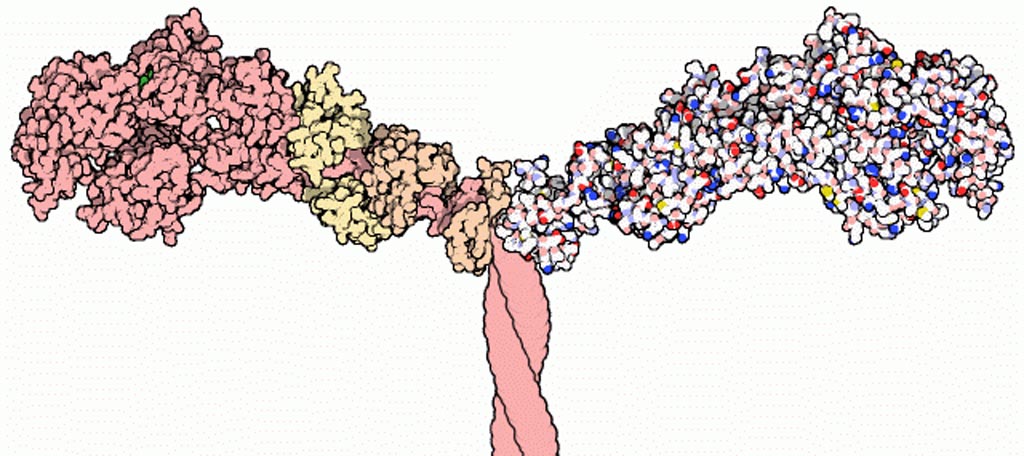Melanoma Cells Secrete Factors to Promote Tumor Growth
By LabMedica International staff writers
Posted on 12 Feb 2019
A team of British researchers found that high Myosin II activity in invasive melanoma cells induced reprogramming of innate immune responses in the local microenvironment to support tumor growth.Posted on 12 Feb 2019
Myosin II (also known as conventional myosin) is the myosin type responsible for producing contraction in muscle cells, and ROCK (Rho-associated protein kinase)-Myosin II was found to drive rounded-amoeboid migration in cancer cells during metastatic dissemination.

Image: Part of the Myosin II structure. Atoms in the heavy chain are colored pink (on the left-hand side); atoms in the light chains are colored faded-orange and faded-yellow (also on the left-hand side) (Photo courtesy of Wikimedia Commons).
Following up this line of research, investigators at Queen Mary University of London (United Kingdom) reported in the January 31, 2019, online edition of the journal Cell that analysis of human melanoma biopsies revealed that amoeboid melanoma cells with high Myosin II activity were predominant in the invasive fronts of primary tumors in proximity to tumor-associated macrophages and vessels. Proteomic analysis showed that ROCK-Myosin II activity in amoeboid cancer cells controlled an immunomodulatory secretome – comprising all the factors secreted by the cell into the extracellular space - enabling the recruitment of monocytes and their differentiation into tumor-promoting macrophages. Both amoeboid cancer cells and their associated macrophages supported an abnormal system of blood vessels, which ultimately facilitated tumor progression.
Mechanistically, amoeboid cancer cells maintained their behavior via ROCK-Myosin II-driven interleukin 1 alpha (IL-1alpha) secretion and NF-kappaB (nuclear factor kappa-light-chain-enhancer of activated B cells) activation.
In addition, using an array of tumor models, the investigators demonstrated that high Myosin II activity in tumor cells reprogrammed the innate immune microenvironment to support tumor growth.
"This study highlights how cancer cells interact with and influence their surrounding environment to grow and spread. Developing treatments that target the chemicals that alter the immune system could help to prevent the spread of the disease," said senior author Dr. Victoria Sanz-Moreno, professor of cancer cell biology at Queen Mary University of London. "We are excited to find out whether inhibitor drugs could be used in combination with other targeted therapies. By identifying effective treatment combinations, we hope that in the future Myosin II and interleukin 1alpha inhibitors could be used to improve patient outcomes and reduce the risk of melanoma coming back."
Related Links:
Queen Mary University of London













